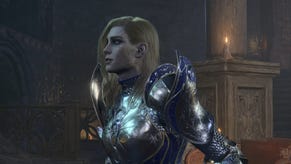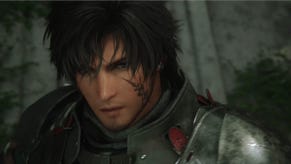Don't miss the hidden stories in Final Fantasy 16's endgame
The road less dominant.
This article contains spoilers for Final Fantasy 16.
We zoom in on Midgar as the train arrives at its destination. The spiky-haired Cloud leaps off the train, the synths chug with tension, and we're ready to blow up a reactor. It's time for another Final Fantasy adventure.
Final Fantasy games are known for their openings, with FF7 in particular being an iconic example. Then there's the Squall and Seifer battle at the start of FF8 before waking up at school; waddling around Alexandria as Vivi in FF9; and those wailing heavy metal chords that initiate blitzball in FF10.
Final Fantasy 16 is no exception, as anyone who's played the demo will know. It is the full game in microcosm: Eikon battles, melodrama, flashy combat, and a heavy influence of Game of Thrones.
Yet as much as these moments are seared into my brain (with a big dollop of nostalgia on top), my enjoyment of the series stems from its sense of adventure - a sense that only comes into perspective in the endgame. And in FF16, it's particularly rewarding.
It happens in almost every game. Those unforgettable openings send us through linear story beats; we travel from location to location in a predetermined order, slowly getting to grips with whatever combat intricacies are in place this time; piece by piece the jigsaw puzzle of a world takes shape.
And then there's a switch. The final puzzle piece slots in - it's usually airship shaped - and suddenly the full scale of the world is apparent. We're free to explore openly, the wide expanse of the world map feeling smaller and more manageable than before. We fly over previously visited locales, reminiscing on the grand journey that's already taken place.
The game feels achievable at this point. We're free to hoover up all those side quests, breed chocobo, complete the hunt board, collect the ultimate weapons. You're at your most powerful here, not just in terms of RPG numbers but your intimate knowledge of the world. You're no longer buried in the details but can take a step back - a flight upwards - to consider the bigger picture. This is one of my favourite parts of any Final Fantasy game.
(Let's just take FF10 out of the picture here though: the less said about chocobo racing and lightning dodging the better)
Beyond FF16's exceptional opening, the endgame is where it really excels. Yes, the second half does meander through plot points with some slightly tedious MMO-style quests - this is the team that made FF14 after all - but pottering around ticking off side quests before saving the world is surprisingly rewarding.
One criticism of FF16 has been its gorgeous but sometimes empty world. I'll admit, I soon discovered the first time running through large areas there isn't quite enough of a reason to warrant exploring. Once side quests open up, however, the world does feel more bustling and alive. Previously empty villages and hamlets feature extra characters and hunts, while locked paths open into new towns. While it's a shame these aren't available from the start, these optional extras are welcome for those not just mainlining the main quest.
The endgame also is where combat really sings. New abilities are doled out frustratingly late, but extra side quests and hunts provide more of an opportunity to experiment. Handily, FF16's ability tree allows you to undo your choices and master alternative moves. With late game hunts I could experiment with my build, try out different strategies, and see which stagger abilities are best linked together for maximum damage.
My personal favourite strategy is to build up Odin's Zantetsuken gauge with a flurry of swipes before slamming down Shiva's Diamond Dust to stagger an enemy and then unleash hell cycling through Clive's remaining skills. But it takes a full suite of abilities and banked ability points to switch around and find which combat style works for you, time and space that the endgame provides.
This extends to the Chronolith Trials. With battles reduced to a single Eikon's powers and time topped up by achieving micro challenges, these trials are a true test of skill prowess and understanding of systems away from the dramatic main quest.
Above all, though, the endgame side quests flesh out the world and narrative in important ways. FF16 succeeds in accomplishing the cinematic vision of Naoki Yoshida, but beyond the outlandish Eikonic clashes and high melodrama, it's the smaller, character-driven moments - hidden away in the endgame - that will stick with me.
Some characters barely seen in the main story are given entire questlines, as Clive and co venture out to save whole communities of Bearers, and there are more positive, even lighthearted, stories outside of the game's tragic core. One particular side quest even explains the flower Dion Lesage and the Holy Empire of Sanbreque use repeatedly as a symbol - a bizarre inclusion without context.
More importantly, there are moments that deepen the relationships between Clive and his party. Two in particular bring the narrative full circle: Clive revisiting his father's grave, and a secret island with Torgal - best boy - offering a touching point of reflection. Here, the end links to the beginning as we consider the full extent of the journey we've accomplished, ahead of what's to come. Hours of adventuring are capped off with a touch of poignancy.
There's a moment between Clive and Jill, too, that adds to her past and hints at a possible future together. Their relationship is a predictable setup, but this final moment - easily missed in a side quest - is a tender finale (and subtle throwback to FF8). It's heightened by the vocal performances of Ben Starr and Susannah Fielding who humanise these pixels into relatable people, and followed by a moving letter from Jill to Clive in which she confesses her deepest feelings.
It was here, in this hidden moment, that Final Fantasy 16 was most affecting.

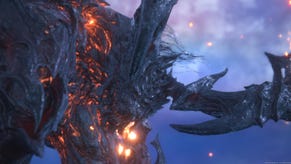

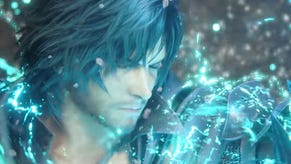
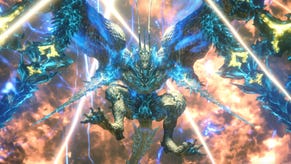
.png?width=291&height=164&fit=crop&quality=80&format=jpg&auto=webp)
